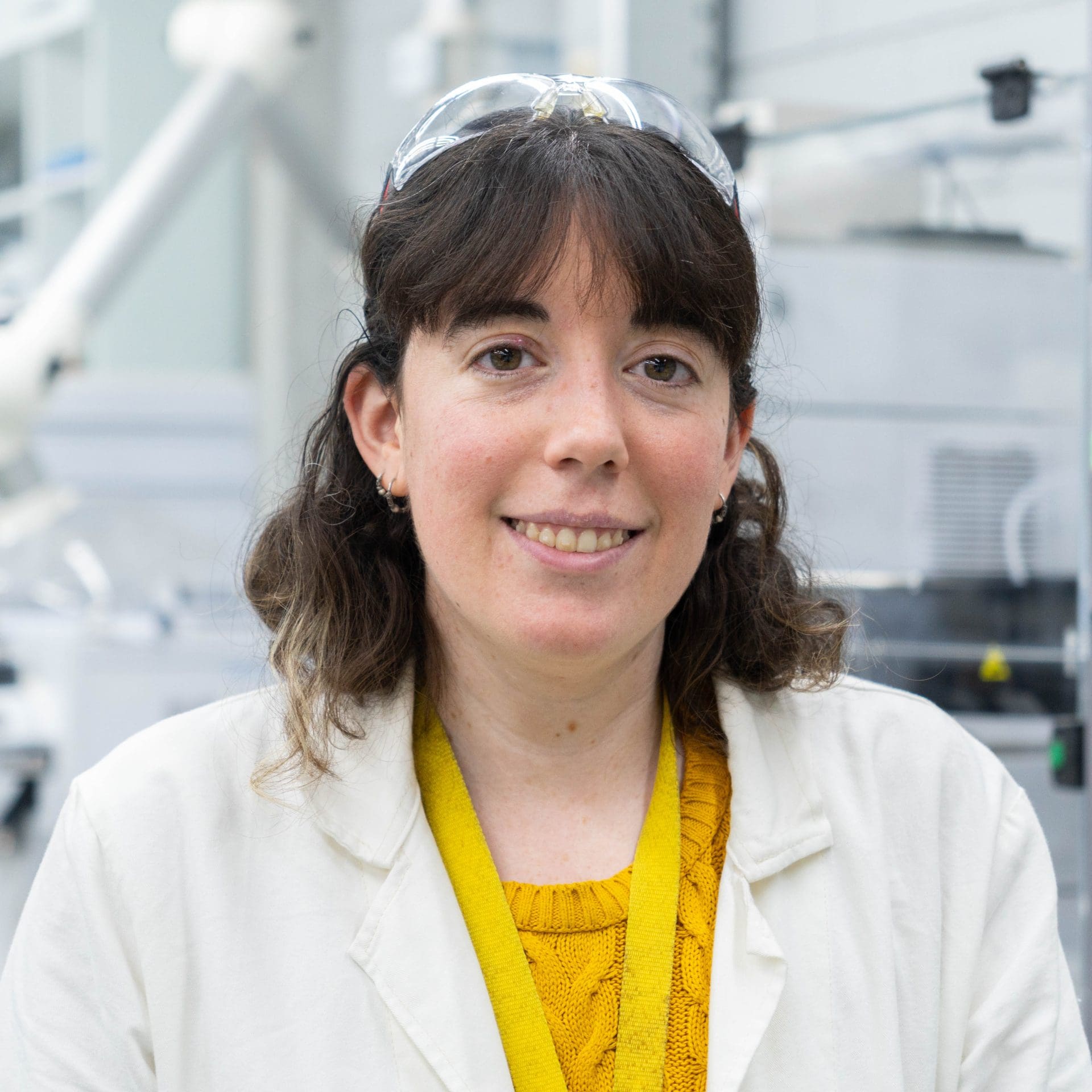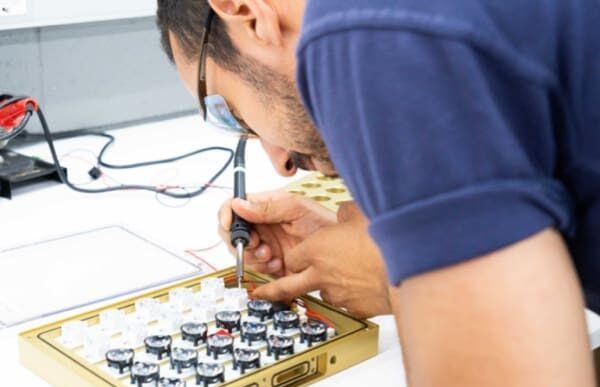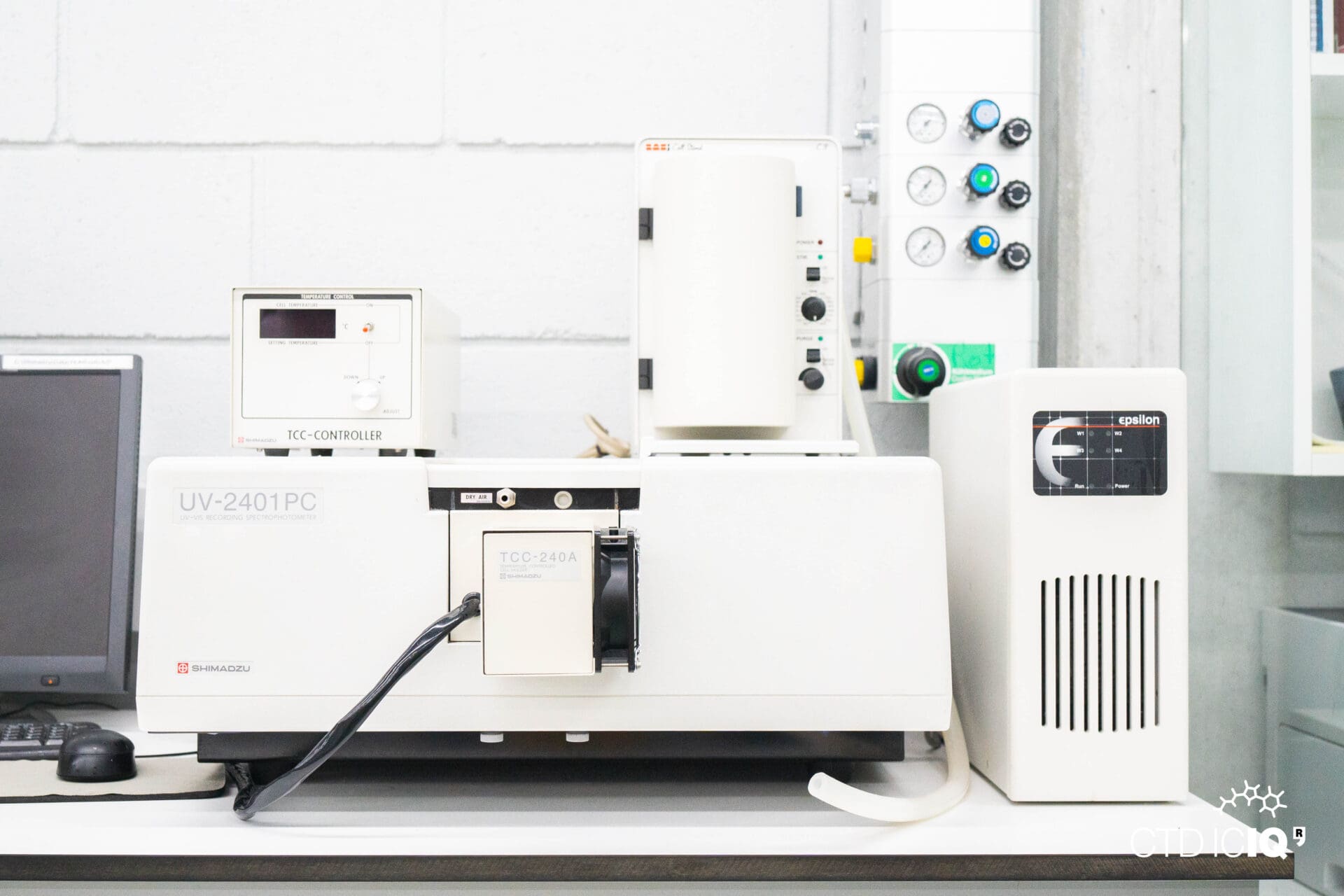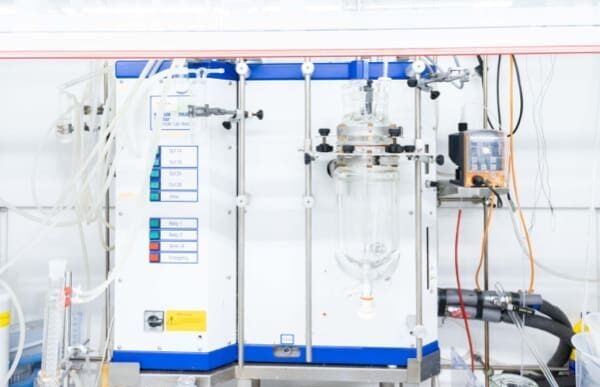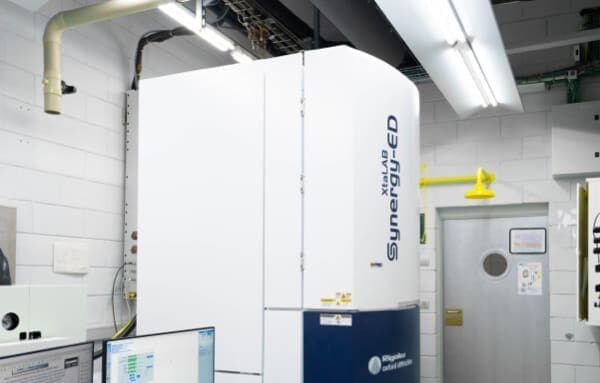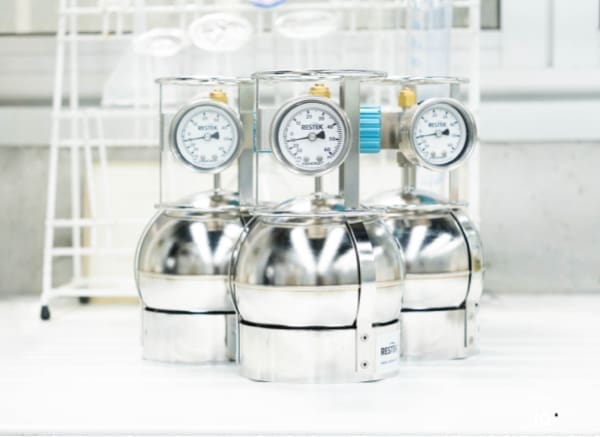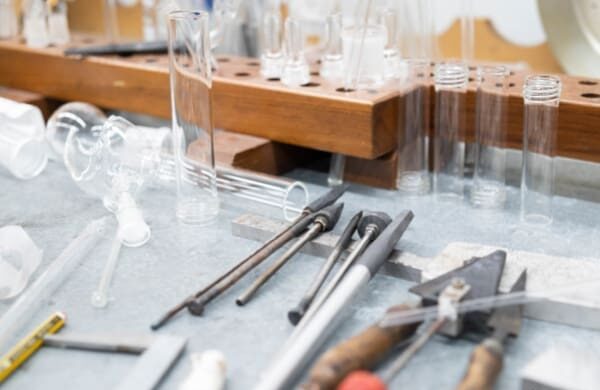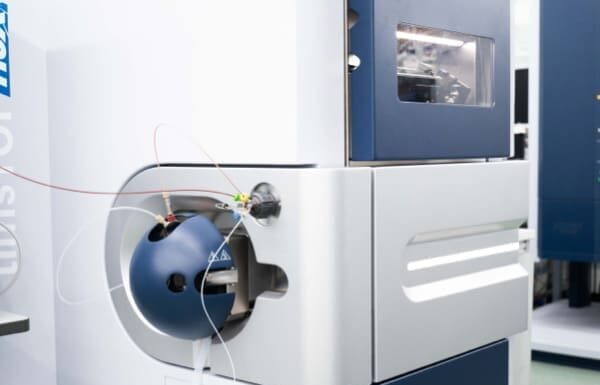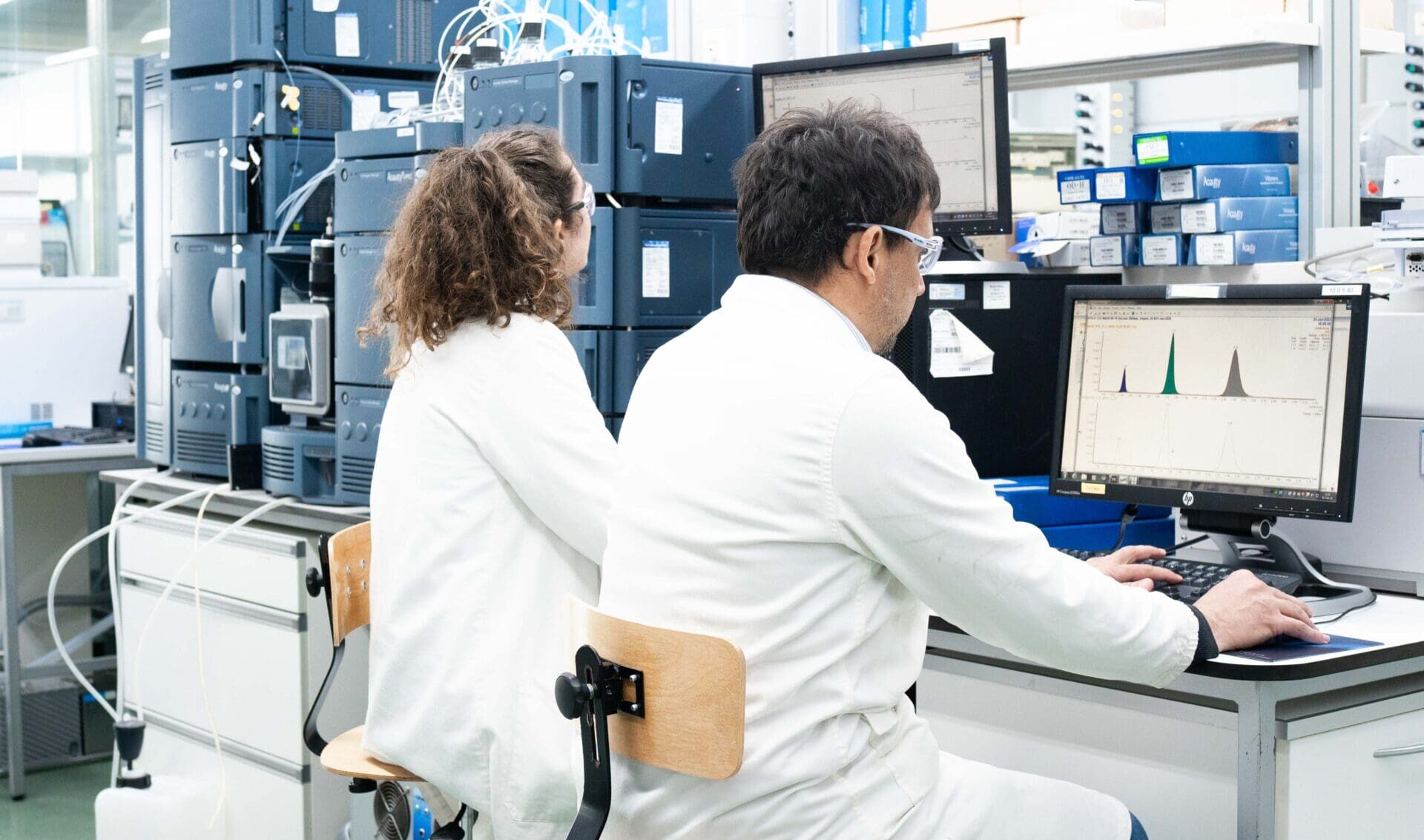Chromatography, Thermal Analysis & Electrochemistry
Chromatography facilitates the separation, identification, and qualitative and quantitative characterization of chiral and non-chiral compounds, as well as their purification. Thermal analysis is commonly used to characterize materials, primarily for the measurement of solid-state phase transitions. The main applications of electrochemistry are the determination of water content, acidity constants, and redox processes.
About
The Chromatography, Thermal Analysis and Electrochemistry Unit provides technical and scientific support in the following techniques:
Chromatography is the main technique in the unit. It supports the separation, identification and isolation of chiral and non-chiral compounds. Regarding liquid chromatography, the unit has four High Performance Liquid Chromatographs, two analytical HPLCs equipped with diode array, and single quadrupole mass detectors, one semi preparative HPLC (up to 40 mL/min) and a preparative (up to 150mL/min), both equipped with UV-vis dual wavelength detectors. In addition, the unit features UPC2 or SFC equipment, which primarily separates chiral compounds. It also features UHPLC equipment, which performs rapid and efficient chromatographic analysis.
Concerning gas chromatography instrumentation, the Unit has three GC, two of them coupled to a mass selective detector and one to flame ionization and thermal conductivity detectors.
Thermal Analysis instrumentation consists of a differential scanning calorimeter (DSC) and a thermobalance (TG). Main applications are measurements of solid phase transitions within the range -80ºC up to 600ºC (DSC) and determination of volatile compounds and/or thermal decomposition (TG) in the range from room temperature up to 1100ºC. An isothermal microcalorimeter titrator (ITC) is also available in this unit. ITC is used for accurate determinations of binding constants, coordination stoichiometry and thermodynamic values.
Electrochemistry instrumentation consists of a Karl Fischer equipment, an ITC and two potentiostats. Main applications are the determination of water content, acidic constants (pKa) and redox processes (voltammetries, electrolysis, etc.)
In addition, the unit’s technicians manage open use instrumentation such as glove boxes, solvent purification systems (SPSs), melting point, freezer dryer, centrifuges, micro and ultramicrobalances and the ultra pure water system.
Equipment
-
Gas Chromatograph
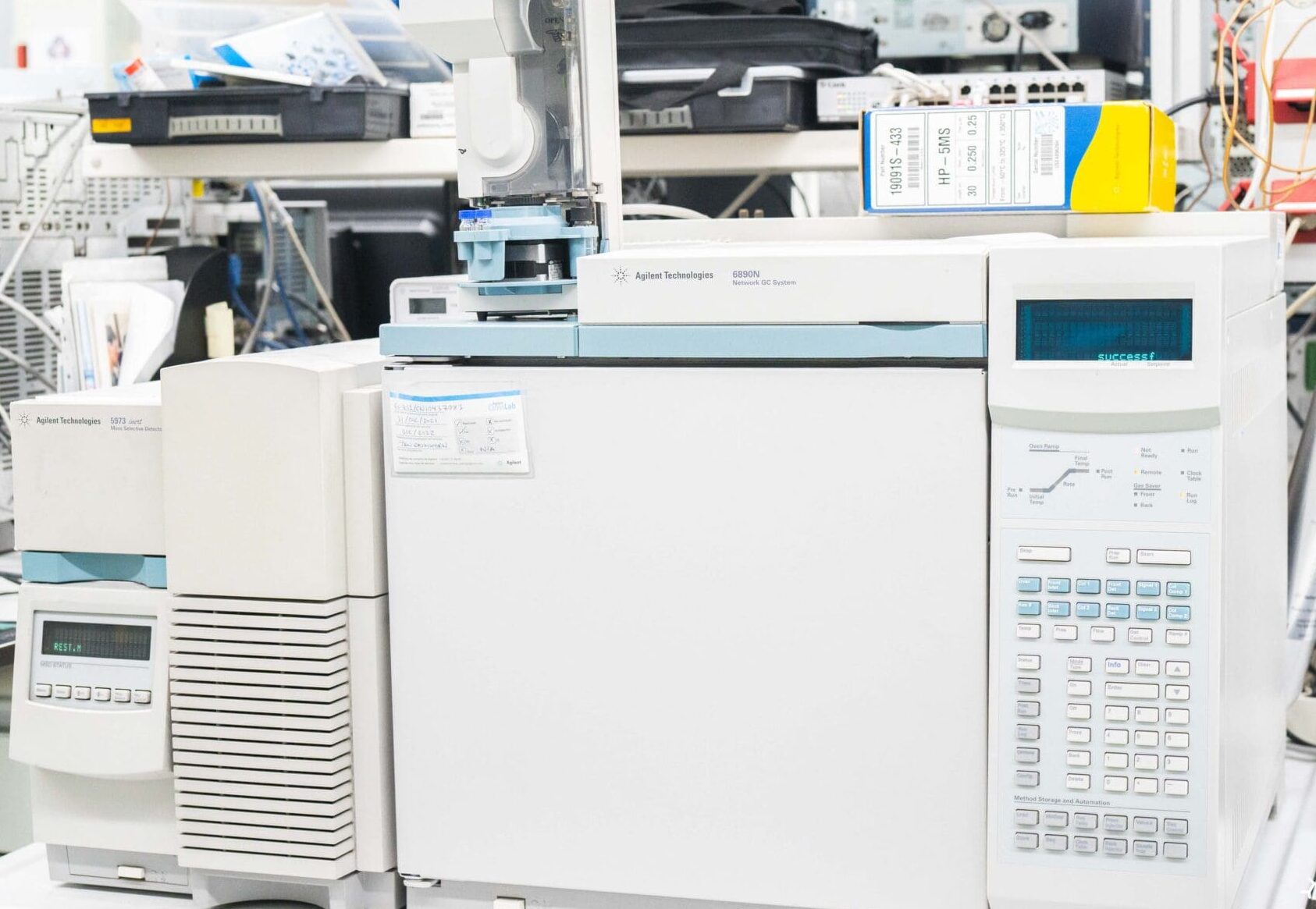
The apparatus consists of two Agilent 6890N gas chromatographs, each coupled to a mass selective detector with an electronic impact ionisation source and an Agilent 7890N with a flame ionisation detector (FID) and a thermal conductivity detector (TCD). The apparatus is equipped with chiral and non-chiral columns.
-
HPLC chromatograph

Two Agilent Technology 1100 series HPLC systems and two more of the 1200 series are present. One of the 1200 series systems is equipped with a variable wavelength detector (VWD), while the others are equipped with a diode array detector (DAD), which is coupled to a single quadrupole mass detector (MS) with ionization mode in ESI and APCI.
-
SFC chromatograph

The Acquity UPC2 from Waters is a supercritical CO2 chromatograph equipped with a PDA detector. There is also the option to couple it with a MS detector.
-
UPLC

The Acquity UPLC H-Class from Waters is equipped with a photodiode array (PDA) detector and SQ ( Single Quadrupole) Mass detector.
-
Preparative Chromatograph

A Nexera Prep Pruification System of Shimadzu. The system is equipped with a LH40 liquid handler, a LC-20AP pump combine with an FCV-200AL quaternary valve, a CTO-40C column oven and two detectors: SPD-M40 photodiode array detector and LCMS-2050 mass spectrometer.
-
DSC

DSC (Differential Scanning Calorimeter) is a primary technique for measuring the thermal properties of materials to establish a connection between temperature and specific physical properties of substances and is the only method for direct determination of the enthalpy associated with the process of interest. A Mettler Toledo DSC822 with a 56-point Au-AuPd thermopile FRS5 sensor and an intracooler. Measuring ranges from -80ºC up to 700 ºC, accuracy ± 0.2 ºC and resolution < 0.4 µW.
-
TGA
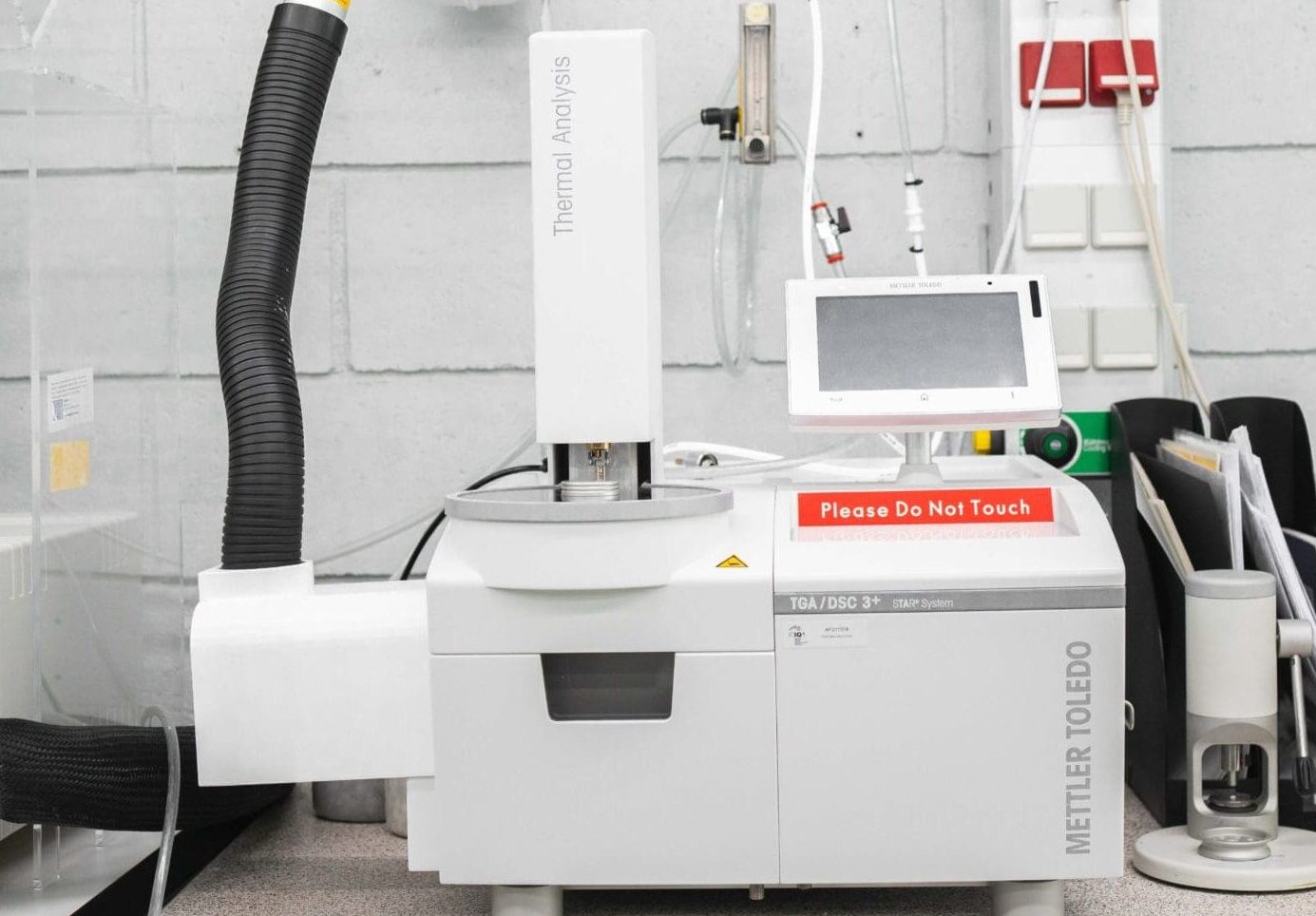
The Thermogravimetric Analyzer (TGA) is a technique in which the mass of a substance is monitored as a function of temperature or time as the sample specimen is subjected to a controlled temperature program in a controlled atmosphere. A Mettler Toledo TGA/SDTA851 with a balance MT1 type. Temperature range from room temperature up to 1100 ºC, accuracy ± 0.25 ºC. Balance measuring range up to 1g with a resolution of 1µg. The options of the atmosphere of the analysis is Air, N2, Ar, CO2, He or O2.
-
ITC

Microcal VP-ITC. The isothermal microcalorimeter titrator (ITC) is used for accurate determinations of binding constants, coordination stoichiometry and thermodynamic values. Measure binding constants in the range og 102 to 109 M-1. Cell volumen of 1.4ml and a precisión 250microlitler siringe, with variable mixing speed. The working temperatura is 2-80ºC and a noise level of 1 nanocal/sec (4 nanowatts).
-
Potentiostat
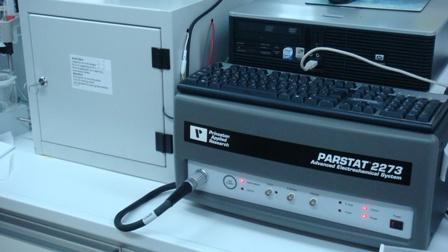
A Princeton Applied Research PARSTAT 2273 potentiostat offering compliance voltage up to ± 100V (available at the counter electrode), ± 10 V scan range and ± 2 A current range.
-
Karl Fisher coloumeter

A Metrohm 756 KF coulometer. Determination ranges from 10 µg up to 200 mg of water, maximum titration speed of 2.24 mg H2O/min and 0.1 µg H2O of resolution. Generator electrode with or without diaphragm.
-
Balances

A Mettler Toledo AX205DR balance is a compact, easy-to-use analytical balance with fully integrated draft shield doors and convenience for right- and left-handers. The AX205 offers weighing capacities of 220g with 0.01mg readability. Expect repeatability of 0.03 mg as well as linearity of ±0.1 mg for these ranges as well. A Mettler Toledo MX5 microbalance allowing a maximum weight of 5.1 g with a precision of 0.001 mg.
-
Glove box
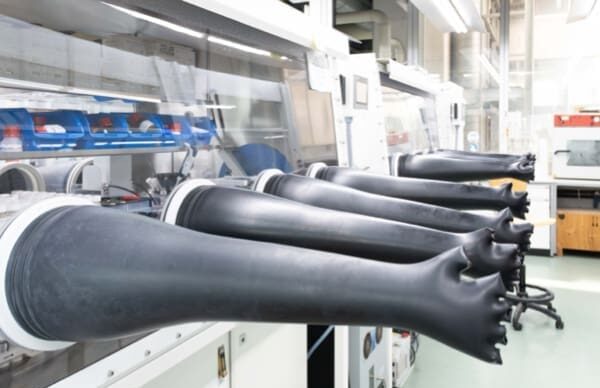
MBraun inert gas boxes ensure that the glovebox interior chamber is able to handle and store substances that are sensitive to oxygen and/or moisture. They are equipped with analytical balances.
-
SPS

Innovative Technologies solvent purification systems (SPS) provide dried organic solvents avoiding distillations for sensitive moisture reactions. The avaiable solvents are hexane, dichloromethane, diethyl ether, tetrahidrofuran, dimethulformamide, toluene and acetonitrile.
-
Melting point

The MP70 from Mettler Toledo is the ideal choice for melting point and melting range determinations. Pharmacopeial and thermodynamic measurement modes with a range of measurement ambient temperatura of up to 350ºC. The instrument offers a resolution of 0.1ºC and accuracy of up to 200ºC of +/- 0.2ºC, and 200ºC to 350ºC of +/-0.5ºC.
-
Freezer dryer

A LyoQuest -85 freeze dryer from Telstar equipped with eight manifolds. The model is designed for aqueous products.
-
Centrifuges

Two centrifuges are available. A 5702 centrifuge from Eppendorf is a non-refrigerated apparatus that can be operated at speeds ranging from 100 to 4400 rpm. It employs tubs with capacities of either 10 or 50ml. The second centrifuge is a MiniSpin from Eppendorf. Non-refrigerated too apparatus, speeds ranging from 800 to 13400 rpm and it employs 12 units of 1.5/2ml Eppendorf tubes.
-
Ultra pure water system

Milli-Q IQ 7000 from Merck produces ultrapure water from a purified water source. It is equipped with two-specific POD-Pak. Bio Pak to remove endotoxins, nucleases, proteases and bacteria from ultrapure water and Milli Pak; filter of 0.22µm designed to remove particles and bacteria from ultrapure water.
Other research units

Let's create a brighter future
Join our team to work with renowned researchers, tackle groundbreaking
projects and contribute to meaningful scientific advancements


